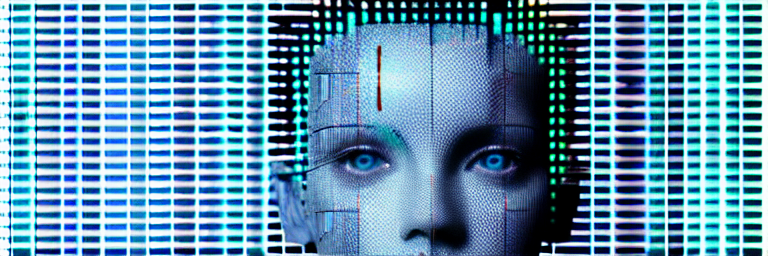In the grand tapestry of technological advancement, superintelligence stands as a looming thread—one that could weave together the most impactful and transformative breakthroughs humanity has ever witnessed. Yet, this same thread, if mishandled, could unravel the very fabric of our existence. The promise of superintelligence lies in its potential to solve monumental global challenges, but its peril lies in the risk of disempowerment or even extinction.
OpenAI, a trailblazing research organization, recognizes this dual nature of superintelligence. In response, they have launched the Superalignment Initiative, a concerted effort to steer the development of AI systems that surpass human intelligence while ensuring their alignment with human values and intent. Let’s delve into the details of this groundbreaking endeavor
The Approach: Building an Automated Alignment Researcher
OpenAI’s approach involves several key components:
- Scalable Training Method: Developing a training process that scales efficiently. This method will allow the alignment researcher to learn from vast amounts of data, including tasks that are challenging for humans to evaluate. Leveraging AI systems to assist in evaluating other AI systems provides a form of scalable oversight.
- Generalization and Oversight: Understanding how models generalize their oversight to unsupervised tasks. This involves ensuring that the alignment researcher’s guidance extends beyond the specific tasks it has directly supervised.
- Validation and Robustness: Validating the alignment of AI systems by automating the search for problematic behavior. Additionally, identifying problematic internals—those aspects of the model that might lead to misalignment—becomes crucial. This process of automated interpretability ensures transparency.
- Adversarial Testing: Stress-testing the entire alignment pipeline by deliberately training misaligned models. This helps confirm that the techniques can detect severe misalignments.
Assembling the Team
OpenAI has assembled a team of top machine learning researchers and engineers to tackle this challenge. Co-led by Ilya Sutskever and Jan Leike, the Superalignment team dedicates 20% of the compute resources secured over the next four years to this critical mission. Their goal? To navigate the uncharted waters of superintelligence, ensuring that it remains a force for good rather than a harbinger of catastrophe.
Current State of Superintelligence
Significant strides have been made in the field of AI, leading to the development of increasingly sophisticated systems capable of performing complex tasks. Current AI systems, while impressive in specific domains, lack the broad cognitive abilities and understanding that characterize human intelligence.
Narrow or specialized AI, designed for specific tasks such as image recognition, language processing, or playing board games, has seen remarkable success. Deep learning, a subset of machine learning, has played a pivotal role in these advancements, enabling AI systems to learn from vast datasets and improve their performance over time. Nevertheless, achieving general intelligence that rivals or surpasses human capabilities remains an elusive goal.
Future Trajectories of Superintelligence
Predicting the future trajectory of superintelligence involves considering various scenarios and potential challenges. Researchers and experts explore two primary pathways:
- Gradual Improvement: Some experts argue that superintelligence may emerge through incremental advancements in AI, with each improvement building upon the previous one. This trajectory involves enhancing specific aspects of intelligence, such as problem-solving, learning, and adaptation, until a point is reached where these systems exhibit general intelligence surpassing human capabilities.
- Explosive Advancement: Alternatively, there is concern about a scenario where superintelligence rapidly surpasses human intelligence, referred to as the “intelligence explosion” or the “singularity.” This idea, popularized by thinkers like Ray Kurzweil, suggests that once AI achieves a certain level of self-improvement, it could rapidly evolve, leading to an unprecedented surge in intelligence.
Implications for Society
The potential development of superintelligence raises profound questions and concerns about its impact on society, ethics, and human existence. Some key considerations include:
- Ethical Challenges: As AI becomes more sophisticated, ethical considerations become increasingly complex. Questions surrounding the rights and responsibilities of superintelligent entities, as well as the potential misuse of such technology, require careful ethical scrutiny.
- Employment Disruption: The advent of superintelligence could reshape the job market, automating tasks across various industries. Preparing for potential workforce disruptions and developing strategies for upskilling and reskilling will be essential.
- Control and Governance: Ensuring that superintelligent systems align with human values and goals is a critical challenge. Establishing robust governance mechanisms, transparency, and accountability will be essential to prevent unintended consequences.
- Safety Measures: Addressing concerns related to the safety and security of superintelligent systems is paramount. Implementing fail-safe mechanisms and safeguards to prevent unintended or harmful actions is crucial.
Conclusion
The Superalignment Initiative represents a beacon of hope—a commitment to responsible AI development. As we stand on the precipice of a new era, OpenAI’s efforts remind us that the path to superintelligence need not be treacherous. With rigorous research, collaboration, and foresight, we can weave a future where humanity and AI coexist harmoniously, bound by shared values and aligned intentions.

